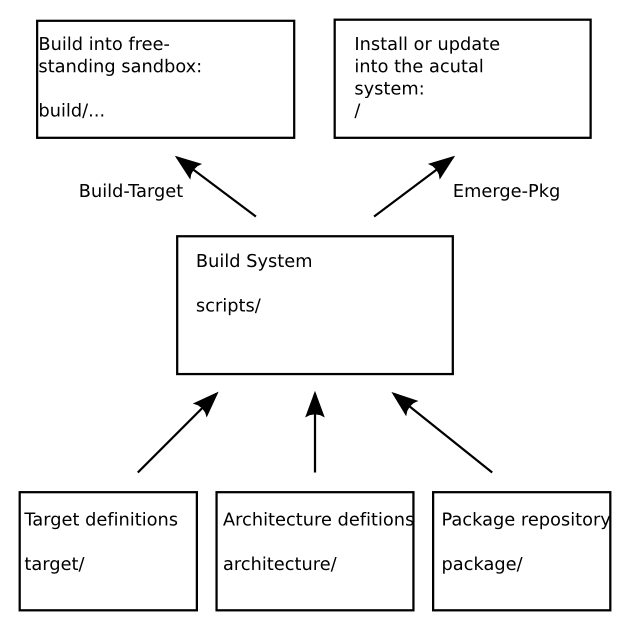The T2 SDE automatic build system is written in form of shell scripts. The main components with additional tools can be found in the directory scripts/.
It is responsible for parsing package meta-data and config files, creating the T2 sandbox environment with its file modification tracking functionality and command wrappers, packaging the result and all the other needed actions between the steps in the build chain. It is also able to perform dependency analysis and includes the menu-driven configuration program to configure the build.
Usually there is one script for a specific function, for example: ./t2 config, Download, Build-Target, Create-ISO among others. Some scripts are also re-used internally, for example ./t2 download is invoked automatically on-demand, to fetch the packages sources when they are required.
T2 build scripts are all run from the T2 top-level directory, like ./t2 config and ./t2 build-target and parse and process the various meta information from the respective directories such as package/, architecture/ and target/
The package meta-data is defined by key-value pairs in various package repositories located in a sub-directory named package/ sorted into categories like package/base, package/network, package/x11, and so on. For each package a Text/Plain .desc file contains the original author, the T2 maintainer, license, version, status, download location with checksum, textual information for the end-user and architecture limitation as well as additional optional tags (see the section called “Description File (.desc)”). Patches needed to compile the package or to fix security or usability bugs can simply be placed in the package directory.
While the automated build system iterates over all packages to be built, it parses the package's meta-data and extracts the source tar-balls, applies all the patches and detects the build type of the source automatically (e.g. configure make, xmkmf, plain make or variations - see the section called “The Automated Package Build”) and builds the package with generated default options. For packages where modifications in the process are appropriate a .conf file for the package can modify variables, add commands to predefined hooks or replace the whole process. An automatically generated .cache file holds generated dependency information as well as reference build-time, package file count and the package size.
Additionally CPU architecture specifica is located in the architecture/ directory, including optimization options, patches or other required quirks.
The target configuration, patches and other payload resists in targets/.
Before T2 2.0 "sub-distributions" where extracted out of a fully built distribution as a sub-set. This had the drawback that the first build needed to build all packages needed by the sub-distributions and that sub-distributions only had the possibility to modify the packages to a minimal degree since this had to happen after the normal package build.
With T2 2.0 "targets" where introduced as a smarter way of dealing with specialization: A target limits its package selection and thus download as well as build to what is really required. Furthermore it and can modify any aspect of a package build, apply custom feature or branding patches and even replace the logic to build a package or final image creation process completely.
